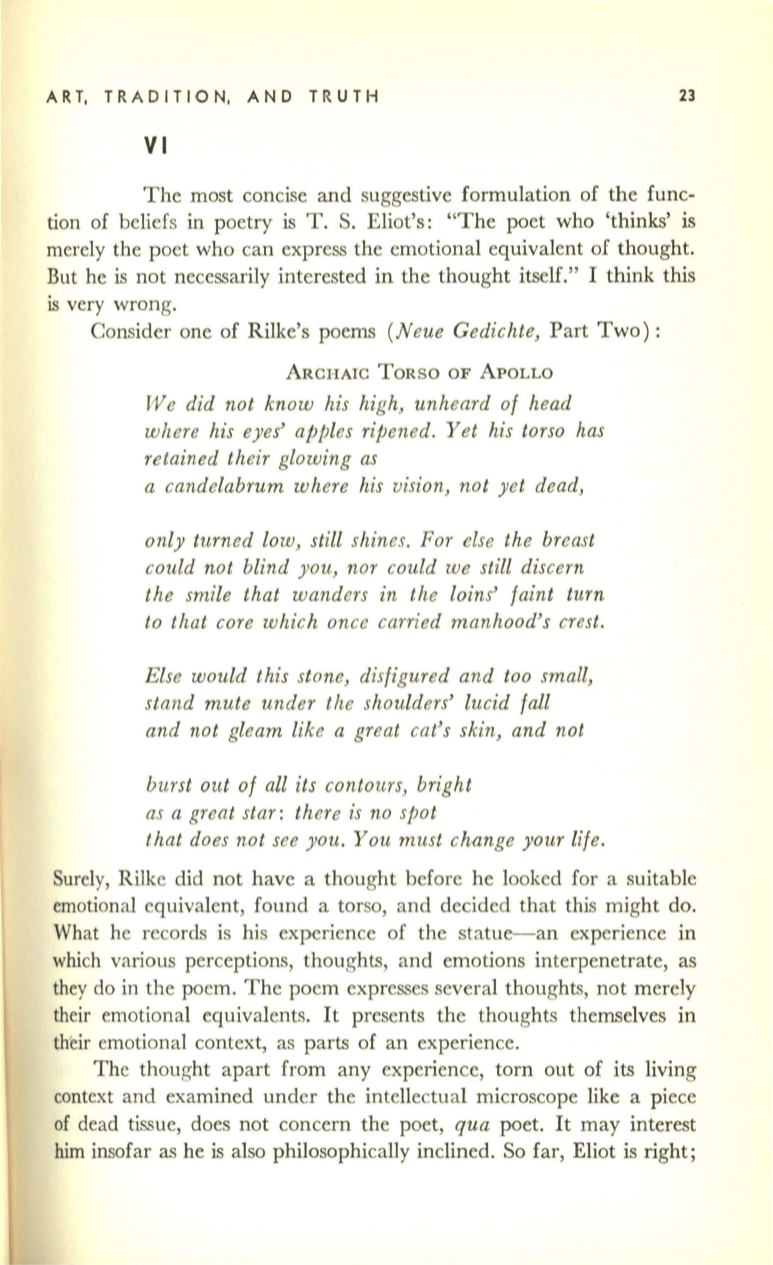
ART. T RA D I T ION. AND T RUT H
23
VI
The most concise and suggestive formulation of the func–
tion of beliefs in poetry is T. S. Eliot's: "The poet who 'thinks' is
merely the poet who can express the emotional equivalent of thought.
But he
is
not necessarily interested in the thought itself." I think this
is very wrong.
Consider one of RiIke's poems
(Neue Gedichte,
Part Two) :
ARCHAIC TORSO OF ApOLLO
We did not know his high, unheard of head
where his eyes' apples ripened. Yet his torso has
retained their glowing as
a candelabrum where his vision, not yet dead,
only turned low, still shines. For else the breast
could not blind you, nor could we still discern
the smile that wanders in the loins' faint turn
to that core which once carried manhood's crest.
Else would this stone, disfigured and too small,
stand mute under the shoulders' lucid fall
and not gleam like a great cat's skin, and not
burst out of all its contours, bright
as a great star : there is no spot
that does not see you. You must change your life.
Surely, Rilke did not have a thought before he looked for a suitable
emotional equivalent, found a torso, and decided that this might do.
What he records is his experience of the statue-an experience in
which various perceptions, thoughts, and emotions interpenetrate, as
they do in the poem. The poem expresses several thoughts, not merely
their emotional equivalents. It presents the thoughts themselves in
their emotional context, as parts of an experience.
The thought apart from any experience, torn out of its living
context and examined under the intellectual microscope like a piece
of dead tissue, does not concern the poet,
qua
poet. It may interest
him
insofar as he is also philosophically inclined. So far, Eliot is right;


